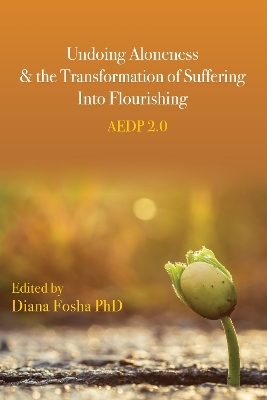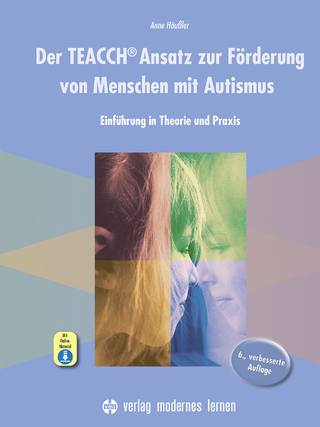
Undoing Aloneness and the Transformation of Suffering Into Flourishing
American Psychological Association (Verlag)
978-1-4338-3396-0 (ISBN)
This book updates clinical guidance and theory for Accelerated Experiential Dynamic Psychotherapy (AEDP), an approach that gives patients corrective emotional and relational experiences that mobilize changes in the brain.
Practitioners of AEDP understand psychopathology as a byproduct of internal working models, borne out of insecure attachment experiences, that now thwart adaptive functioning in adulthood. The goal of AEDP is to be therapeutically present with patients and their pain and to guide them to have a new experience—a good experience—thus rewiring memory and capacity to reflect. Updates to the AEDP approach (moving it into its second iteration, or "2.0") leverage emerging findings from the field of affective neuroscience to enhance individuals' healing and transformation.
The authors demonstrate the power of relational work by sharing excerpts and analysis of clinical session transcripts. In each chapter, they engage different aspects of the AEDP model to show how emotional suffering can be transformed into adaptive connection, even for individuals with histories of neglect, abuse, and complex trauma.
Diana Fosha, PhD, is the developer of Accelerated Experiential Dynamic Psychotherapy (AEDP), a healing-oriented psychotherapy to treat attachment trauma and help people connect to their vitality. She is director of the AEDP Institute. Her work focuses on integrating neuroplasticity, recognition science and developmental dyadic research into experiential clinical process work with patients. With an interest in the phenomenology of experience, she is on the cutting edge of transformational theory and practice. AEDP’s transformational theory, putting neuroplasticity and attachment into clinical action, is similarly receiving recognition. She lives and practices in New York City and leads workshops and trainings worldwide.
Contributors
Acknowledgments
Introduction: AEDP After Twenty Years
Diana Fosha
Part I. Healing From the Get-go
Chapter 1. How AEDP Works
Chapter 2. The First Session in AEDP: Harnessing Transformance and Co-creating a Secure Attachment
Part II. Context and Scaffolding
Chapter 3. Historical Context: AEDP's Place in the World of Psychotherapy
Chapter 4. What Just Happened? And What is Happening Now? The Art and Science of Moment-to-Moment Tracking in AEDP
Chapter 5. A Shift in Focus: Making Use of Therapist Experience in AEDP
Chapter 6. Using AEDP's Representational Schemas to Scaffold the Therapist's Attunement and Engagement
Part III. How to Work with Core Affective Experience: Attachment, Emotion, Self
Chapter 7. Neuroplasticity in Action: Rewiring Internal Working Models of Attachment
Chapter 8. Portrayals in AEDP: Processing Core Affective Experience and Bringing it to Completion
Chapter 9. Agency, Will, and Desire as Core Affective Experience: Undoing Disempowerment to Foster the Emergence of the Agentic Self
Part IV. How to Work with Maladaptive Affective Experience and Complex Trauma
Chapter 10. Fierce Love: Championing the Core Self to Transform Trauma and Pathogenic States
Chapter 11. Finding Healing in the Broken Places: Intra-Relational AEDP Work With Traumatic Aloneness
Chapter 12. Relational Prisms: Navigating Experiential Attachment Work with Dissociation and Multiplicity in AEDP
Part V. Integration, Flourishing, Core State, and the Core Self
Chapter 13. What Went Right? What Happens in the Brain During AEDP's Metatherapeutic Processing
Chapter 14. "We are organized to be better than fine": Building the Transformational Theory of AEDP 2.0
Chapter 15. Future Directions for AEDP
Appendix. The Phenomenology of the Four-State Transformational Process in AEDP
Index
About the Editor
| Erscheinungsdatum | 06.08.2021 |
|---|---|
| Verlagsort | Washington DC |
| Sprache | englisch |
| Maße | 178 x 254 mm |
| Themenwelt | Geisteswissenschaften ► Psychologie ► Biopsychologie / Neurowissenschaften |
| Geisteswissenschaften ► Psychologie ► Klinische Psychologie | |
| Medizin / Pharmazie ► Medizinische Fachgebiete ► Psychiatrie / Psychotherapie | |
| ISBN-10 | 1-4338-3396-4 / 1433833964 |
| ISBN-13 | 978-1-4338-3396-0 / 9781433833960 |
| Zustand | Neuware |
| Haben Sie eine Frage zum Produkt? |
aus dem Bereich


